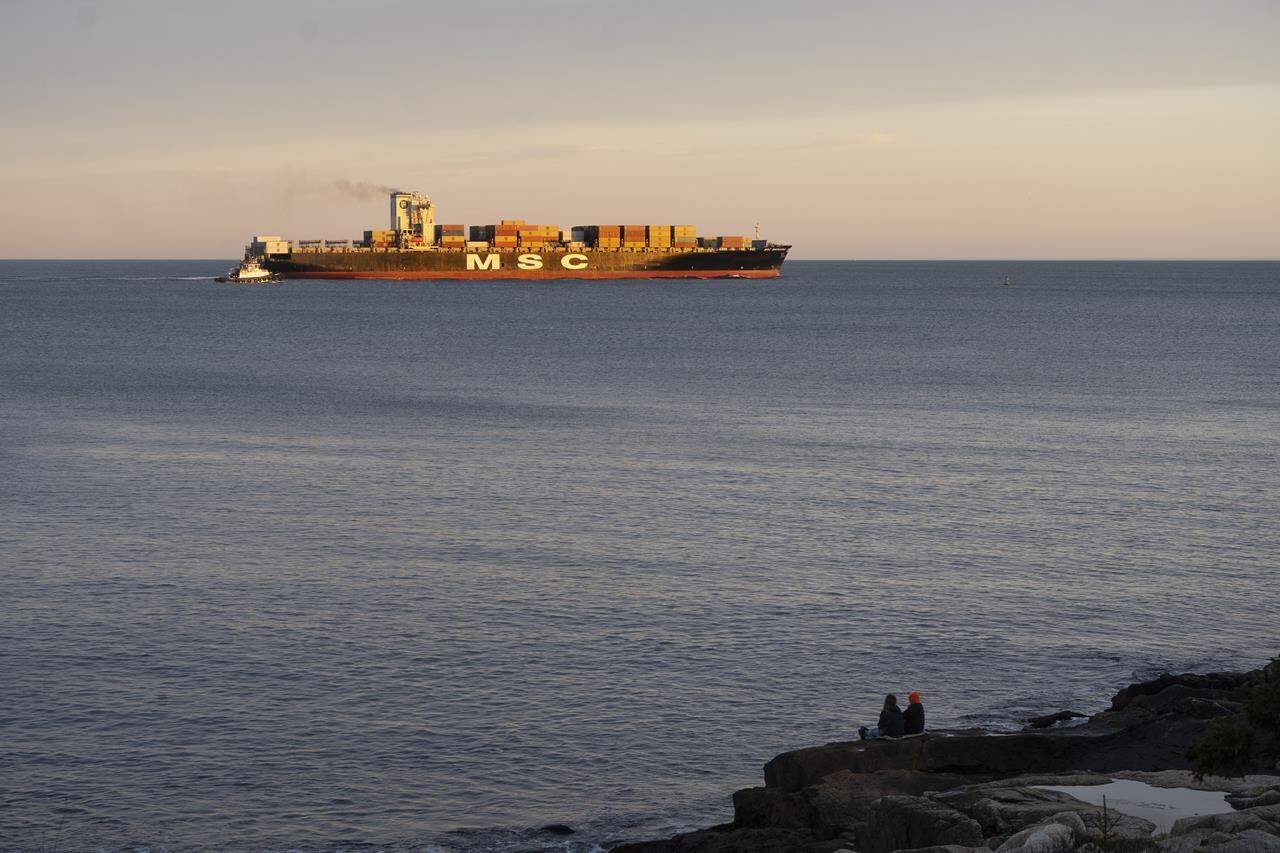Canadian shippers are starting to feel the strain of recent attacks on cargo vessels in the Red Sea, as container rates rise and boats arrive late on the East Coast.
Data from the Port of Halifax shows that 57 of the 87 ships — nearly two-thirds — slated to berth at the port over the next four weeks are now expected to reach the terminal at least a day behind schedule, with some running more than two weeks late.
According to industry research firm Drewry, the average price of shipping containers has doubled since mid-December, when Houthi militants in Yemen stepped up attacks on commercial boats to protest against Israel’s military campaign in the Gaza Strip.
On Friday, the U.S. led airstrikes on Houthi rebels in a response that included planning support from the Canadian Armed Forces. Houthi rebels fired a missile on Monday that struck a U.S.-owned ship, less than a day after the same group launched an anti-ship cruise missile toward an American destroyer in the Red Sea.
The widening conflict has prompted major container carriers to steer clear of the route that passes through the Suez Canal, opting instead for a path around Africa’s Cape of Good Hope that can add one to two weeks to transit times and greater fuel, crew and insurance costs.
“The shipping industry globally is being impacted by the situation in the Red Sea, and we are beginning to see some delays as shipping lines employ alternate routings around Africa,” said Paul MacIsaac, senior vice-president at the Port of Halifax, in a statement.
READ ALSO: Red Sea attacks could have ripple effect on shippers — and consumers — in Canada
Shipping Federation of Canada CEO Chris Hall says the delays have left importers scrambling, with stock stalled en route to Canadian shores and shelves.
“It was staggering, the number of ships that have diverted … That change adds time and cost onto the end goods,” he said.
“Somebody has to pick that up.”
But experts warned against overstating the impact, as schedules at the Port of Montreal and the West Coast remain largely unaffected so far.
“As the Red Sea/Suez Canal is a trade route that largely services Europe and the east coast of North America, transpacific transit lengths are not expected to be impacted by the ongoing situation,” said Alex Munro, spokesman for the Vancouver Fraser Port Authority.
Potential ripple effects, including price impacts, may yet hit the route.
Rates on hauls from East Asia to the U.S. West Coast jumped 56 per cent month-over-month as of Thursday, according to freight analytics firm Xeneta.
But excess capacity in the sector means carriers can adjust to longer shipping times and rates will likely settle far below pandemic highs, according to the Global Shippers Forum, which represents cargo owners.
“There is no chronic shortage of shipping capacity in the way there was during the COVID pandemic, and there is substantial new capacity expected to be delivered throughout the first half of 2024,” the organization said in an update to members on Friday.
The longer routes means ports will need to make a “one-off” change to schedules over the next few weeks, but service patterns should return to predictability afterward, it said.
Shippers facing contract renewals amid climbing costs can include provisions to pay less once spot rates drop again, the group said.
Meanwhile, demand for cargo space on board remains stable or on a slight decline, experts say.
“There was high inflation, there was the COVID hangover and people spent all their CERB money on big-screen TVs; they didn’t need another,” said John Corey, who heads the Freight Management Association of Canada. Container traffic through the West Coast dropped about nine per cent last year, he said.
Nonetheless, a drought in Central America has further amplified the impact of the Red Sea no-go zone.
The dry spell has sapped the Panama Canal of water, which is used to raise and lower ships at a dozen locks, prompting officials to cut the number of boats they let through the waterway.
Fewer slots have boosted tolls and caused bottlenecks at the critical trade conduit between the Atlantic and Pacific Oceans and pushed some oil tankers and container ships to steer clear of the back-up by taking longer, costlier routes — typically via the Suez Canal.
Now, the Red Sea crisis is adding to those shipping costs. Since mid-December, rates rose 153 per cent for freight shipped from East Asia to northern Europe, according to Xeneta.
Delayed product arrivals aside, the problems at the two canals may not be immediate for Canadians.
“I think it’s going to take longer for that to affect Canada,” said Corey.
“But it will; it will.”
Christopher Reynolds, The Canadian Press

